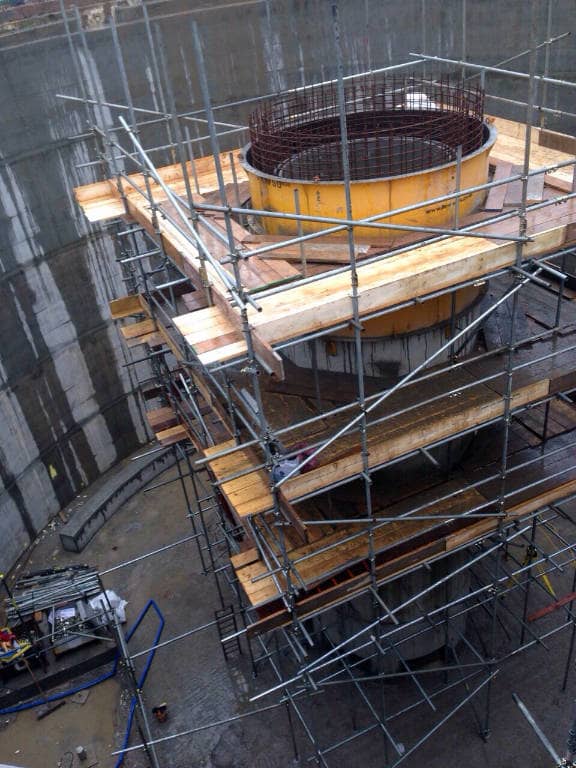In the ever-evolving landscape of industrial development, eco-friendly approaches are becoming progressively important. Within these methods, eco-friendly scaffolding options are taking center stage. As commercial projects expand in scale and intricacy, the need for effective and safe scaffold grows critical. Understanding what commercial scaffold is and the reasons it is is essential not only helps safeguard workers but also adds to a greener building method.
Having various types of scaffold available, every designed for particular jobs, it is imperative for construction teams to select carefully. Boosting job site safety and complying to stringent regulations are vital elements of any commercial endeavor. This article investigates the different forms of scaffold used in the sector, emphasizes security compliance concerns, and looks into the significance of scaffold in modern development. From high-rise buildings to extensive remodels, we will reveal how eco-friendly scaffold solutions can benefit both the ecosystem and the success of business development initiatives.
Understanding Industrial Frameworks
Industrial frameworks is a short-term structure employed to assist laborers and supplies during the construction, remodeling, or maintenance of industrial structures. It provides a safe working area at multiple elevations, enabling workers to gain entry to difficult-to-access locations for jobs such as painting, drywall set-up, or structural maintenance. Its significance cannot be overstated, as it serves a critical role in maintaining both productivity and security on job sites.
The kinds of frameworks used in commercial tasks change according to the specific requirements of the project. Traditional frame frameworks, unitized frameworks, and system scaffolding are popular options, each presenting distinct features in terms of versatility, durability, and facility of construction. Selecting the right framework system is essential for fulfilling security regulations, supporting the load needs of the project, and fitting the particular configuration of the facility.
In furthermore promoting access, commercial frameworks improves construction site safety by supplying employees with secure grounds and handrails to avoid falls. Properly installed frameworks reduces the likelihood of mishaps, and compliance with regulations such as those mandated by OSHA is crucial. Organizations must perform routine security inspections and offer comprehensive education for their crews to guarantee all employees understand the hazards associated with frameworks and how to reduce them efficiently.
Protection and Regulations in Scaffold Systems

Guaranteeing protection and adherence in scaffolding is essential for protecting workers and preserving the integrity of a construction site. The OSHA has set forth particular regulations that govern scaffolding operations, mandating inspections, education, and compliance to safety protocols. Compliance with these guidelines not only aids to avoid incidents but also minimizes legal risks for businesses involved in the construction industry. It is essential that all workers comprehend these guidelines to foster a culture of security on the job site.
Additionally, conducting comprehensive safety checks is a vital step in the scaffold procedure. Before any work begins, scaffolding must be evaluated by a skilled professional to ensure its structural integrity and adherence to safety guidelines. Regular inspections should be conducted throughout the length of the construction to identify deterioration, loose parts, or any possible hazards that could jeopardize worker safety. These inspections should be documented and analyzed to ensure adherence with both national and local standards.
Training requirements for scaffolding crews play a crucial role in ensuring worker protection on site. All employees must receive adequate instruction on the use of scaffold gear, identifying hazards, and emergency procedures. Ongoing education and refresher courses help keep safety practices at the forefront of worker operations. When workers are well-informed and equipped with the right knowledge, the likelihood of accidents diminishes significantly, creating a more secure environment for all involved in the construction endeavor.
Determining the Right Scaffolding Solutions
Determining the right scaffolding solution for a business project can greatly impact safety, effectiveness, and overall project success. Start by analyzing the specific requirements of your project, including the elevation, type of work being conducted, and the surroundings in which the scaffolding will be employed. Understanding these factors will help you establish whether a prefabricated system, tube and clamp, or system scaffolding meets your needs best. Each type offers unique benefits, so consider the extent of work and site setup.
It is essential to examine the load-bearing capacity and strength of the scaffolding system you select. For instance, aluminum scaffolding is lightweight and easy to set up, making it ideal for projects requiring rapid assembly and mobility. However, for heavier equipment or loads, you may need a more sturdy steel scaffolding solution. Talking to a scaffolding expert can offer insights into the most suitable materials and designs to ensure safety and compliance with industry standards.
Furthermore, consider the ease of access and the potential for customization in your scaffolding setup. https://www.scaffolders-kent.uk/best-commercial-scaffolding-in-kent/ can be tailored to fit unique architectural features or site constraints. When you prioritize accessibility and flexibility in design, you create a safer working environment for your crew while enhancing overall project productivity. Finally, making knowledgeable decisions about scaffolding solutions will lead to more successful project results.
